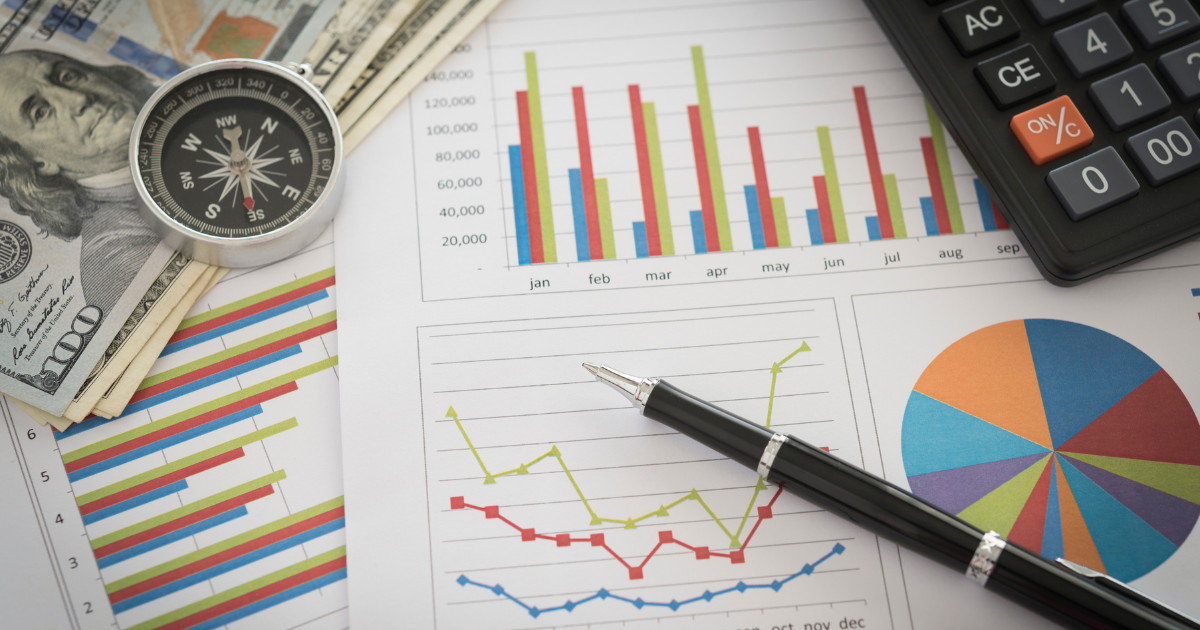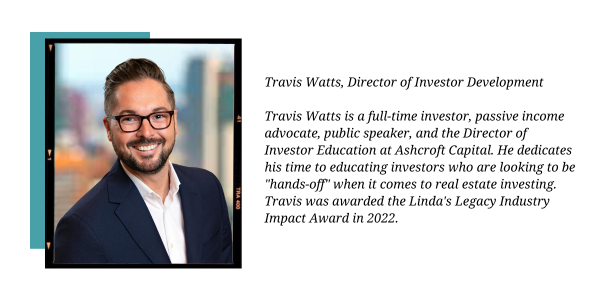December 13, 2022
By: Travis Watts, Director of Investor Development
Most of us are seeking some version of financial freedom, but what exactly does that mean? Financial freedom, or financial independence as I like to call it, is for the most part, subjectively defined in terms of your own life and/or financial goals. For me, financial freedom is defined as a financial status where I generate more passive income than I need to cover my living expenses. A financial status where you can stop trading your time for money, and work becomes an option, rather than an obligation. It’s a goal that arguably almost everyone aspires to. Yet the path to financial independence can feel elusive and overwhelming to many.
So what is required to become financially free? How do you know when you’ve attained such a status?
The answers to questions like these will be different for each person.
For me, four fundamentals have helped me pave my path to my own financial goals and optimal lifestyle. I call these my “Four Pillars to Financial Independence,” and while these are unique to me and may or may not work for you, my hope is that it will lend you some motivation and insight to come up with your own path to achieving your financial goals and optimal lifestyle.
Earn at Your Highest and Best Potential
For my first pillar of financial independence, I’ve learned that it is essential for me to earn as much income (actively) as I can using my highest and best earning potential. I know, it sounds counterintuitive to the end goal, but the reality is, absent inherited wealth or a major windfall, the path to financial independence usually starts with active income. I define my highest and best earning potential as a factor of two things:
- My available time
- My hourly rate or salary
In an ideal scenario, I always aim to make the most amount of money possible in the least amount of time. However, sometimes this isn’t always possible, for example when you are just starting out in your career or role. There may be only so much I can charge for my time, which is why I found that the best way to expand my earning potential is to expand my time. We all have 168 hours every week.
Years ago, in the pursuit to financial independence, I was an active W2 employee in the oil and gas industry working literally 98 hours per week. I would work for 14 days in a row and 14 hours each day. I was determined to achieve financial freedom, so in the little spare time I had and my days off, I would flip homes to generate additional income. The extra income I made from flips was used to invest in long-term, buy and hold single-family rentals for cash flow. At that point in my life, my fullest potential was limited to the numbers of hours I could physically work. The same may be true for you.
I want to be clear, I’m not saying that anyone should work 98 hours per week, but always think about where you may have additional hours because it could possibly be used to make additional income.
Are there promotions that might be available in order to generate more income? Is it possible to pivot careers or companies to a position that pays better? Are consultant or self-employed jobs an option? These are things I’ve considered as an approach toward my end goal(s).
You Can Be Twice As Rich By Desiring Half As Much
The second pillar I established on my road to achieving financial independence is reducing my living expenses. I’ve managed to live off as little of income as possible for a set period of time (not forever) to expedite my process drastically. I’m not saying that I’ve lived or currently live drastically below my means. However, for me a little sacrifice has gone a long way.
In the first 7 years of my pursuit towards financial independence, saving as much money as I could played a critical role. For example, if I made $100,000 working full time in oil and gas, plus $75,000 a year fixing and flipping properties, and $25,000 a year in passive income generated from my long-term rentals, then I had a total of $200,000 in annual income. This was nearly double my salary on its own, which is the power of having a side hustle. Rather than increasing my expenses and lifestyle in the short run, I kept my overall expenses around $50,000 per year, so I could invest the remaining $150,000 a year. While I am not including taxes in this example for simplicity purposes, I am grateful for the tax advantages I’ve been able to utilize investing in real estate.
I was disciplined enough to manage a 75% savings rate. This is certainly extreme, yet it allowed me to kickstart the journey to my own financial independence.
Invest For Passive Income
The third pillar of achieving my financial independence was by investing the difference between my earnings and expenses into something that could produce passive income. I never want the margin between my income and living expenses sitting on the sidelines. Especially knowing that it can be used to generate additional income that I will not have to trade my time for.
I was taught to be a saver, by simply putting my money in the bank for a rainy day or hoping for the right opportunity to pop up. Overtime, I learned that the problem with this strategy is that my money loses value against inflation and the opportunity cost has been substantial over the long run.
Instead, the key to my success so far has been being a long-term investor focused on acquiring passive income assets that replaces some it not all of my earned income. My goal when seeking financial independence is to acquire assets that will “work” for me.
Avoid Bad Debt
The fourth and final pillar of my road to financial independence is to avoid bad debt. For the sake of this article, I consider bad debt anything that has a higher interest rate than I could otherwise achieve by investing for passive income. Two examples could be credit cards and personal loans. Here’s the simplest approach: If I can reasonably and conservatively invest in something that produces passive income and that investment has a higher yield than the interest I owe on my debt, then I’m not focused on paying off the debt. I considered this “good” debt in my book.
Let’s assume that I have student loan debt with 3% annual interest and let’s say that I can reasonably and conservatively invest in a real estate project that provides a 7% annualized yield. Given the positive spread, I’d rather place my money into the real estate project because I can potentially earn 4% more than what I owe on the debt.
On the flip side, if I have credit card debt at 15% annualized and I can only achieve a potential 7% yield, I’d rather pay down the credit card debt. For me, it wouldn’t make sense to take on the additional risk. While I know that there are no guarantees in investing, there is a guaranteed savings of 15% for me by paying down the credit card.
In Conclusion
To recap, what has been the fundamental the “Four Pillars of Financial Independence,” for me are:
- Earning at my highest and best earning potential
- Living on as little as possible (for a period of time)
- Investing the difference in assets that produce passive income
- Minimizing high interest debt
Please note, this is a summary of my personal journey and based on my own definition of financial independence. What worked for me may not be right for you, but hopefully there are a few practical takeaways for you, nonetheless.
Download the full article here.
If you are interested in learning more about investing with us please schedule a call with our Investor Relations Team at investorrelations@ashcroftcapital.com.



